Drinking Habits of Ireland's 1916 Revolutionary Leaders
Watch the Recipe Video
The man who fired the shot credited with starting the 1916 uprising, and leading the flying column which carried out the first military operation of the revolution, Patrick Ramsbottom, was relieved of his command due to drinking.
Laois was particularly important as, in addition to having the main rail line running through it, it also had the main road connections to the cities of Cork and Limerick, so additonally many bridges were rendered impassible and roads were blocked.
In Enniscorthy, the uprising lasted four days before British troops arrived from the Curragh and elsewhere to retake the town. During that time, under the direction of the rebel leaders, every bar was closed and there was a ban on the sale of alcohol in the town.

One of the Uprising leaders, Con Colbert, famously did not drink or smoke. He was ironically finally arrested with his soldiers, occupying the Marrybone Lane Distillery for its strategic importance. His final words, on repositioning the paper target for his firing squad was 'Would it not be better nearer the heart?'



